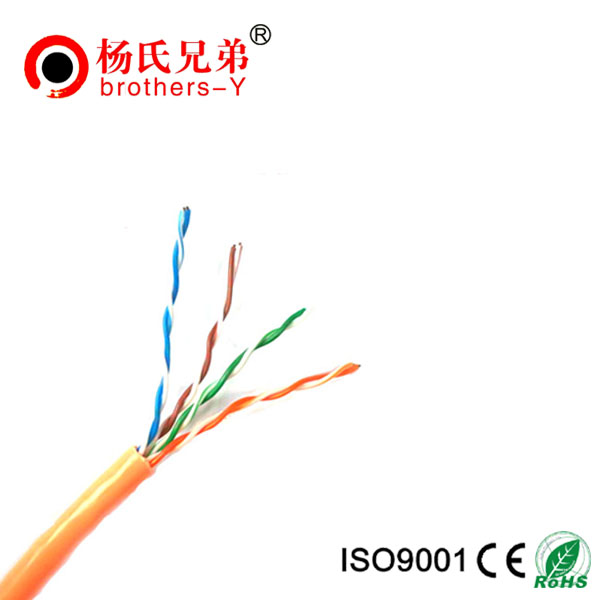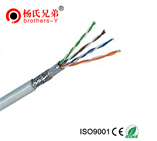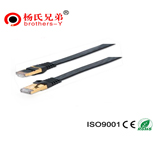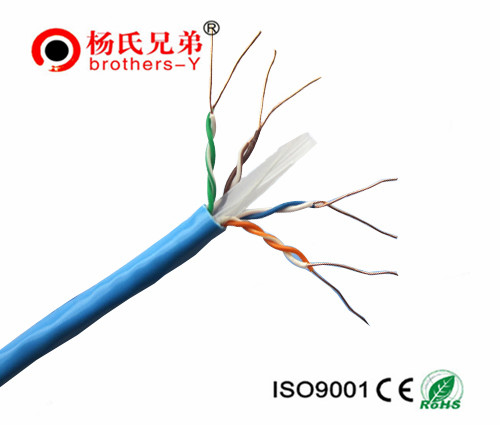CAT 6A shielded systems are becoming the ideal choice for ... 10GBASE-T over copper cabling.
CAT 6A shielded systems are becoming the ideal choice for ... 10GBASE-T over copper cabling.
Now that copper 10-Gigabit active devices are becoming readily available system designers and IT managers are being tasked with implementation of 10G-Gigabit Ethernet networks. Industry standards for 10G Ethernet have been defined for some time now. The IEEE 802.3an 10GBASE-T standard was published in 2006 and the Telecommunications Industry Association (TIA) ratified the TTIA-568-C.2 standard in August of 2009. The ISO group also ratified a Category 6A channel for 10GBASE-T in its ISO 11801:2002 Amendment 1 for Class EA. It’s important to point out that these standards apply to both unshielded and shielded cabling systems.
CAT 6A shielded systems are becoming the ideal choice for the transmission of 10GBASE-T over copper cabling. This article focuses on the known advantages of shielded CAT 6A cabling systems over unshielded CAT 6A cabling systems.
The main advantage of a CAT 6A shielded system is the suppression of alien crosstalk (AXT). AXT is defined as unwanted signal coupling from one balanced twisted-pair component, channel, or permanent link to another. AXT is not a problem for applications designed to operate over lower frequency ranges specified for CAT 5e (100MHz) or CAT 6 (250Mz), but AXT becomes an issue at higher frequencies required for Cat 6A (500MHz). The standard committees all agree that AXT is the single most significant performance barrier for the transmission of 10GBASE-T over
copper cabling.
There are two known methods to mitigate AXT. The first method is obtained by adding space between cables and port outlets. Cable manufactures typically increase the cable’s outer jacket diameter to create space between adjacent cables. The other and more effective mitigation method is obtained by wrapping a metal foil around the inner twisted pairs (shielded cable). Shielded jacks are typically achieved by manufacturing jacks from die cast zinc, stamped metal or plated plastic.
Furthermore, CAT 6A UTP cabling systems require AXT field testing to insure 10G performance. Most experts agree that it’s practically impossible to100% field verify a CAT 6A UTP system. AXT testing is a costly and time consuming process. As such, several cabling and connectivity manufactures do not require AXT testing as part of their CAT 6A UTP warranty, however, bypassing this step would be a bad decision on such a large investment. As long as proper installation procedures are followed CAT 6A shielded systems do not require AXT testing because
the shielding virtually eliminates AXT. Lab and field testing has verified that shielded CAT 6A systems pass AXT requirements with significant headroom under worst configurations whereas CAT 6A UTP systems provide only marginal passes under normal configurations. Therefore, it’s safe to conclude that a CAT 6A shielded system can be installed with confidence that AXT will not be an issue.
Information about
- Key Elements for Cable Installation Success
- More details & technology between network cable
- Difference between CAT 5e patch cable and CAT 5e. crossover cable
- RJ45 Colors and Wiring Guide Diagram TIA/EIA 568A/568B
- Twisted-Pair Cable
- What Is The Difference Between Cat 5, Cat 5e, and Cat 6 Cable
- Analysis of the North American Wire and Cable Materials Market
- How to install additional phone lines?
New Products
Top articles
- Are there any advantages to using Cat 6 cable for computer networking?
- Are there any problems with using patch cables that are less than a foot long? If so, what are they?
- Letter of Invitation for CTICC
- What are some common uses for Cat5e ethernet cable?
- 10 Gigabit Ethernet interconnect solutions: Investigate carefully before choosing
- Mixing CAT 6A shielded cable with CAT 6 UTP or CAT 5e UTP cables isn’t an issue.
- What cable do I use to connect a PC to a DSL or Cable modem?
- Analysis of the Underground Transmission and Distribution Cables Market
- Is there any benefit to using CAT 5e solid conductor cable?
- Mixing CAT 6A shielded cable with CAT 6 UTP or CAT 5e UTP cables isn’t an issue
Latest articles
- 2014 CeBIT Australia
- 2014 CeBIT Germany
- 2014 International CES
- Vietnam Telecomp 2013
- ROHS Certificate For Lan Cable
- CE Certificate For Power Cable
- ROHS Certificate For Power Cable
- UL Certificate For Communication Cable
- Are there any advantages to using Cat 6 cable for computer networking?
- Are there any problems with using patch cables that are less than a foot long? If so, what are they?














